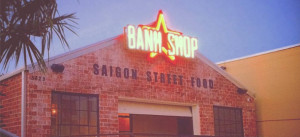Some of you fast-food aficionados may recognize the name Yum Brands. Others of us may better recognize their product lines. Yum Brands, the parent company of KFC, Pizza Hut, and Taco Bell recently launched a new Vietnamese inspired restaurant known as Banh Shop. Focused on attracting fast-casual dining patrons, the name is a derivative of “banh mi” – a popular type of Vietnamese sandwich. The allure of Banh Shop is to offer ethnic food in a fast yet casual environment, serving sandwiches, rice bowls, and salads.
Fast casual is one of the biggest growth markets in restaurant franchising. An upgrade to traditional fast food options, Banh Shop is meant to compete with other dining options such as Chipotle and Panera, which offer fresh but fast fare. Popular with Millennials, this type of dining bridges the gap between fast food and casual dining, and my personal take is that they taste a lot better too.
Yum Brands seemed to have done their homework when picking the chain’s first location in Dallas, TX. Dallas has the fourth largest Vietnamese population in the U.S. Even the name spawns from a classic Vietnamese menu option, helping to create a brand customers could make an immediate connection to. However, as good as the marketing and advertising seems – someone dropped the ball… big time. Just days after opening, a petition had already been started in the Dallas community to have the logo removed. Why you ask? Because the red star in the logo is a symbol of communism within the Vietnamese community.
Never before has a market analysis seemed so important to Yum Brands. If you’re opening a Vietnamese inspired restaurant in an area with the fourth largest Vietnamese population, should it not dawn on the marketing communications team to do their research? To maybe not include an offensive Vietnamese symbol in their logo? Because as we read this week, what’s a brand if they don’t first listen to their consumers? This is a prime example of the importance of knowing your target audience and how crucial a logo can be to a brand’s identity.
To Yum Brands credit, they did manage the negative word of mouth by responding immediately. They removed all instances of the red star logo from the restaurant, including the main sign, and replaced on menus. They were honest and transparent in their reply, citing that they made a mistake. In an effort to pick their dropped jaw off the floor, Yum Brands even took on Thanh Cung, President of the Vietnamese-American Community of Greater Dallas, who first started the petition, as an advisor. A strategic move would have been to include someone like him, with the pertinent cultural awareness, into the mix in the beginning. Instead of looking like a culturally obtuse brand within the first week of opening.
References
Backman, M. (2014, September 18). Yum Brand’s cultural snafu forces logo change. CNN Money. Retrieved from http://money.cnn.com/2014/09/18/news/companies/banh-shop-logo-change/
Franchise Herald. (2014, September 22). Yum Brands opens Vietnamese Banh Shop. Franchise Herald. Retrieved from http://www.franchiseherald.com/articles/7151/20140922/yum-brands-opens-vietnamese-banh-shop.htm
Horovitz, B. (2014, September 20). Yum yanks Banh Shop logo after angry petition. USA Today. Retrieved from http://www.usatoday.com/story/money/business/2014/09/18/yum-brands-banh-shop-fast-casual-dining/15849879/
Taylor, K. (2014, September 18). Taco Bell’s new sister restaurant apologizes for ‘communist’ logo. Entrepreneur. Retrieved from http://www.entrepreneur.com/article/237600


4 Responses to Yummy for Yum: A no-go logo